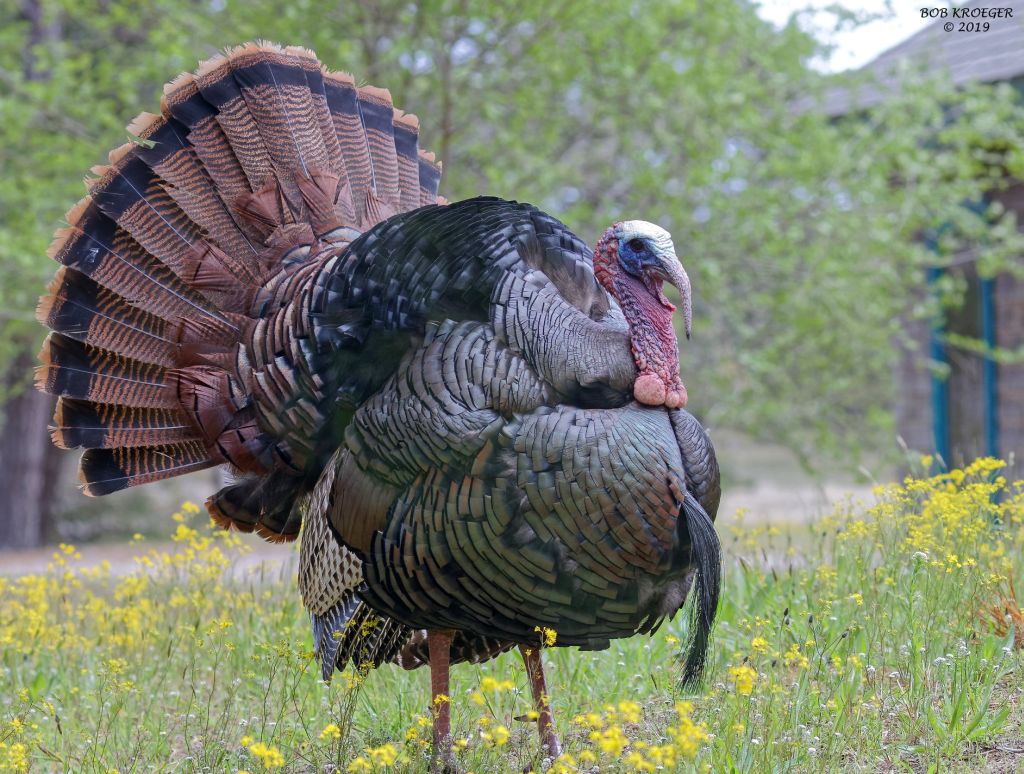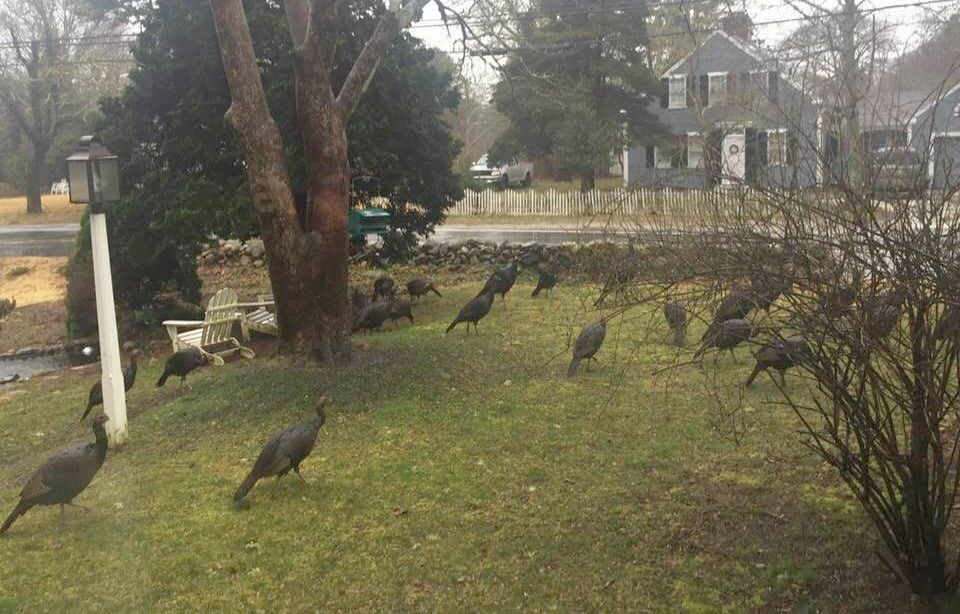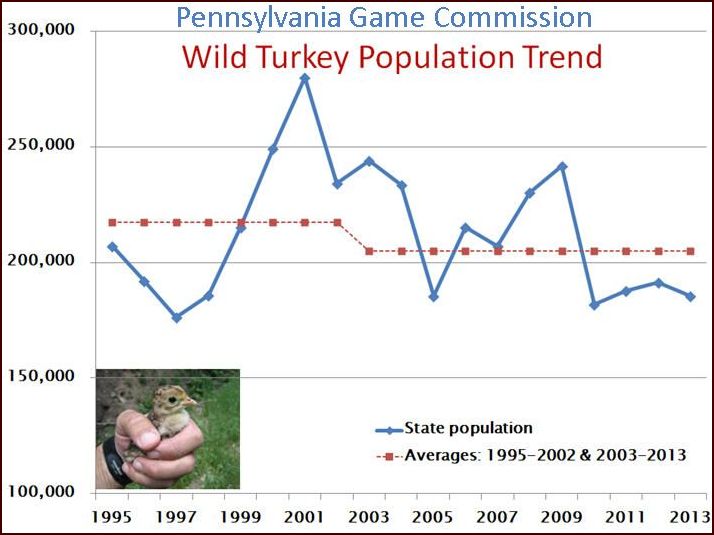
24 November 2019
Wild turkey flocks are going through changes, declining here, expanding there.
In Pennsylvania their population declined 24% in the past two decades. At their peak in the early 2000’s there were 280,000 statewide. This year there are only 212,200. The graph below shows the turkeys’ rise and fall, 1995 to 2013, carefully tracked by the PA Game Commission (PGC) because turkeys are a game bird.
The Game Commission notes that their decline is from a combination of factors:
- Negative habitat changes: mono-culture farms, invasive plants, less food (fewer insects, acorns, beech nuts, etc), and less cover (declines in shrubby cover).
- Unpredictable weather and extreme weather events when poults are young
- An increase in predators, especially in poor cover areas.
In response to the downward trend the Game Commission lowered the harvest limits so there is less hunting pressure on the birds. They are also studying whether any disease has had a significant effect.
Pennsylvania is not alone. Wild turkeys are declining across the eastern U.S. from western New York state to Mississippi, Arkansas and Missouri.
Fifty years ago there weren’t any turkeys in Massachusetts but a modest reintroduction effort in the 1970’s (37 birds) turned the tide. They now have 25,000 turkeys and the population keeps growing.
Wild turkeys are especially abundant on Cape Cod where there’s plenty of food and cover and very little hunting. Flocks roam the neighborhoods, scratch for grubs in grass and gardens, and challenge small dogs and people when they feel threatened.
Wild turkeys have pretty much taken over. Here’s a flock in Bob Kroeger’s yard during a Nor’easter in March 2018.

If you’re missing turkeys here in Pennsylvania, I know you’ll find them there.
(photos taken on Cape Cod by Bob Kroeger, graph from the PA Game Commission; click on the caption to see the original)

Very informative post, Kate. Thanks. Mr. Kroeger’s yard really was taken over!!